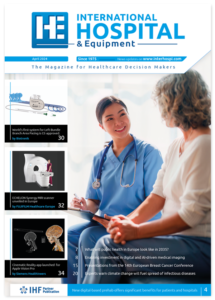New tool aims to make surgery safer by helping doctors see nerves
During operations, it can be difficult for surgeons to avoid severing crucial nerves because they look so much like other tissue. A new non-invasive approach that uses polarized light to make nerves stand out from other tissue could help surgeons avoid accidentally injuring nerves or assist them in identifying nerves in need of repair.
Although nerve injuries are a known complication for many types of surgery, surgeries involving the hand and wrist come with a higher risk because of the dense networks of nerves in this area. There are a few techniques available to help doctors identify nerves, but they have various limitations such as not providing real-time information, requiring physical contact with the nerve or requiring the addition of a fluorescent dye.
Cousins, Kenneth and Patrick Chin, developed the idea independently from any institute to use an optical technique known as collimated polarized light imaging (CPLi) to identify nerves during surgery. Kenneth later joined a research group led by Thomas van Gulik, a surgeon at the Academic Medical Center, and brought along a working prototype which has been further developed into a practical system that can be deployed in the operating room.
In The Optical Society (OSA) journal Biomedical Optics Express, the researchers report that a surgeon using CPLi technology was able to correctly identify nerves in a human hand 100 percent of the time, compared to an accuracy rate of 77 percent for the surgeon who identified nerves using only a visual inspection.
CPLi uses a polarized beam of light to illuminate the tissue. When this light passes through a nerve, the tissue’s unique internal structure reflects the light in a way that is dependent on how the nerve fibre is oriented compared to the orientation of the polarization of the light. By rotating the light’s polarization, the reflection appears to switch on and off, making the nerve tissue stand out from other tissue. For this application, it was important to use light that was collimated, meaning all the light waves were parallel to each other, to maximize the amount of light reflected by the tissue.
“We adapted the optics used for CPLi so that they could be incorporated in a surgical microscope, which can be placed above the surgical area,” said Kenneth Chin. “The resulting system can be used in a wide range of surgical fields where superficial nerves need to be identified.”
After testing their technique on animal tissue, the researchers used it to examine 13 tissue sites from the hand of a human cadaver. A surgeon looked for nerve tissue at these sites by eye under typical surgical illumination while a different surgeon used CPLi for an independent assessment. Histological evaluation was then used to verify the presence of nerve tissue at each site. The surgeon using visual inspection correctly identified nerve tissue in 10 of the 13 cases while the surgeon using CPLi correctly identified nerve tissue in all cases.
With patient consent, the researchers also used CPLi to successfully identify nerve tissue during a procedure to relieve pain in the wrist. They plan to do additional tests of the technique during live surgery to better understand how the optical reflection of nerves might vary among patients and under various surgical conditions.
The Optical Society
www.osa.org/en-us/about_osa/newsroom/news_releases/2017/new_tool_aims_to_make_surgery_safer_by_helping_doc/

